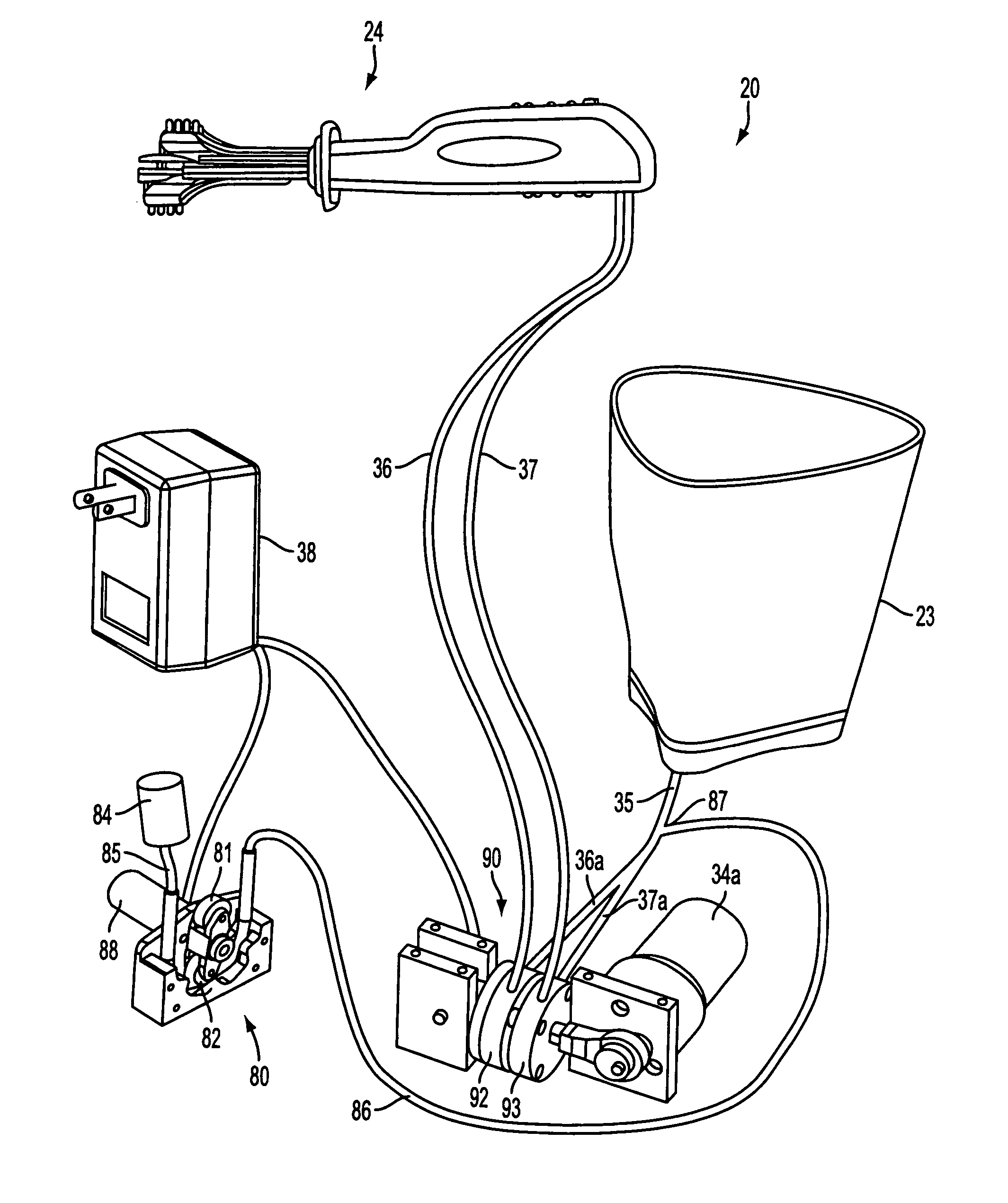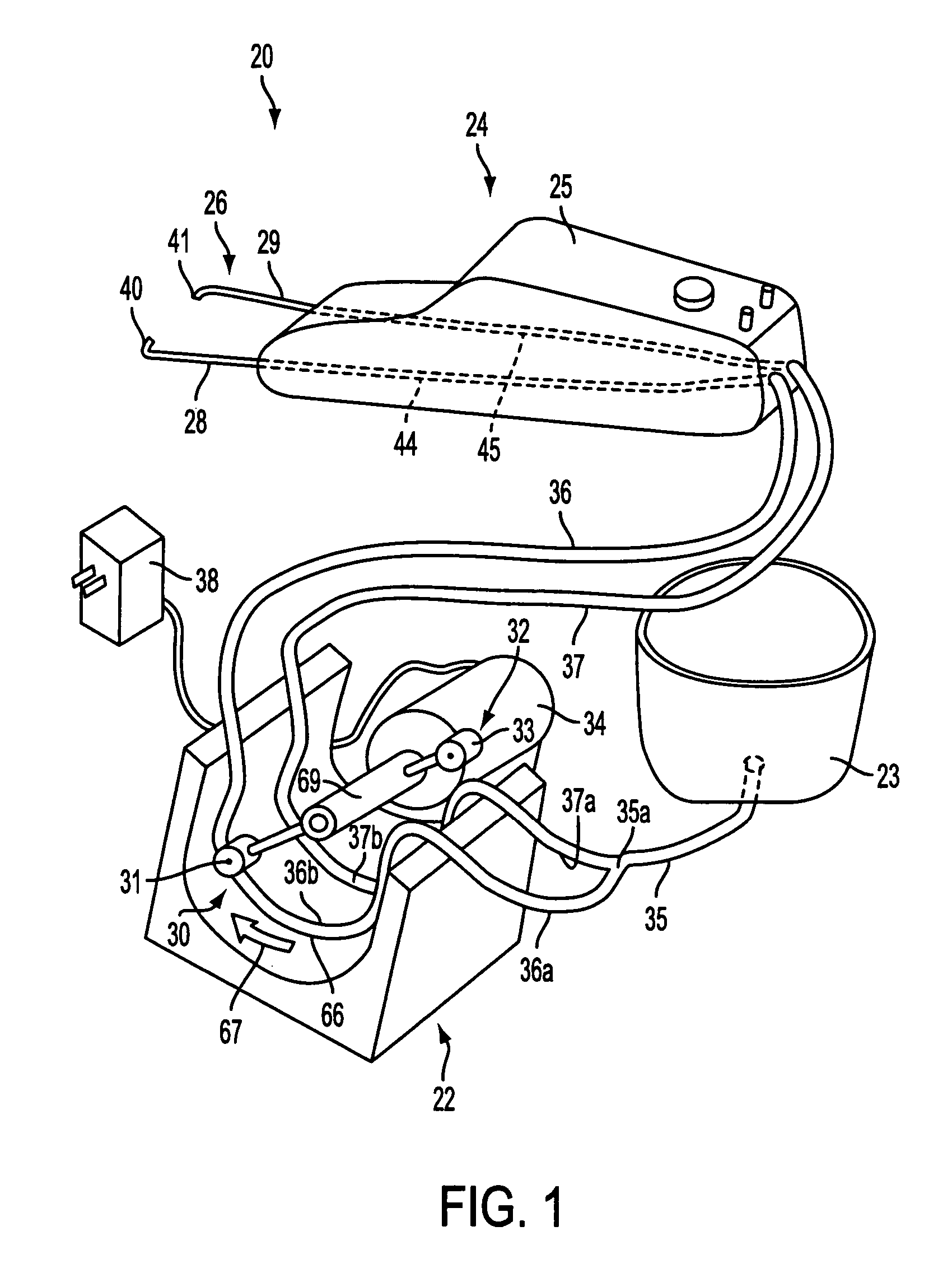Oral irrigation and/or brushing devices and/or methods
a brushing device and oral technology, applied in the field of oral irrigation and/or brushing devices and/or methods, can solve the problems of insufficient or unsuitable, tiresome, repetitive brushing, and inability to brush properly,
- Summary
- Abstract
- Description
- Claims
- Application Information
AI Technical Summary
Benefits of technology
Problems solved by technology
Method used
Image
Examples
first embodiment
[0086]There can then be a very definite pulse factor involved that can provide an alternating arrangement of pulse jets, as shown in FIG. 2A, e.g., a first pulse of water 52 from the outside 48, then a second pulse 53 from the inside 49. It has been found that approximately 250 pulses per minute may provide the most effective results. The alternating pulse (out-to-in then in-to-out) etc. can be highly desirable because a non-alternating set of pulses, e.g., when the pulses are established at substantially the same time, the pulses may then strike substantially simultaneously at debris trapped in the space, e.g., space 51 between the teeth, see e.g., teeth 55, 56, which debris might then be trapped at or near the mid point. Alternating pulses, on the other hand, may allow each pulse of water to separately / independently impact the debris, see particle 54 in FIG. 2A, and thereby loosen the debris more efficiently with a back and forth action (rather than operating to maintain the debri...
embodiment 224
[0123]Thus as shown in the drawings, a representative embodiment 224 of the present invention may include a powered toothbrush with oral irrigation and / or a powered oral irrigation device with a toothbrush. This device 224 extends longitudinally (and in one orientation, horizontally) along a central axis CA and has four main parts including: a rearwardly positioned control-handle 225; at least one forwardly positioned tripartite brushing head(s) 262 and / or 264 vertically spaced form the central axis CA and directionally longitudinally reciprocatably attached to the handle 225. Each such longitudinal reciprocatable tripartite brushing head includes a horizontal brush 263, 265 for brushing the occlusial surfaces of a row of teeth, and opposed upright second brushes 266, 267 and / or 268, 269 for respectively simultaneously brushing lingual and bucal surfaces of upright brushes surrounded teeth-row; the control handle 225 being internally or externally provided with powering means (see e...
PUM
 Login to View More
Login to View More Abstract
Description
Claims
Application Information
 Login to View More
Login to View More - R&D
- Intellectual Property
- Life Sciences
- Materials
- Tech Scout
- Unparalleled Data Quality
- Higher Quality Content
- 60% Fewer Hallucinations
Browse by: Latest US Patents, China's latest patents, Technical Efficacy Thesaurus, Application Domain, Technology Topic, Popular Technical Reports.
© 2025 PatSnap. All rights reserved.Legal|Privacy policy|Modern Slavery Act Transparency Statement|Sitemap|About US| Contact US: help@patsnap.com



